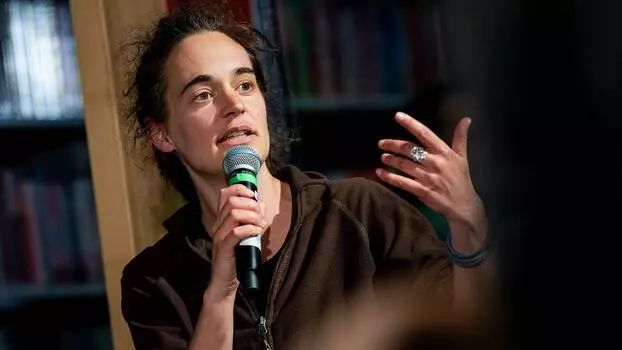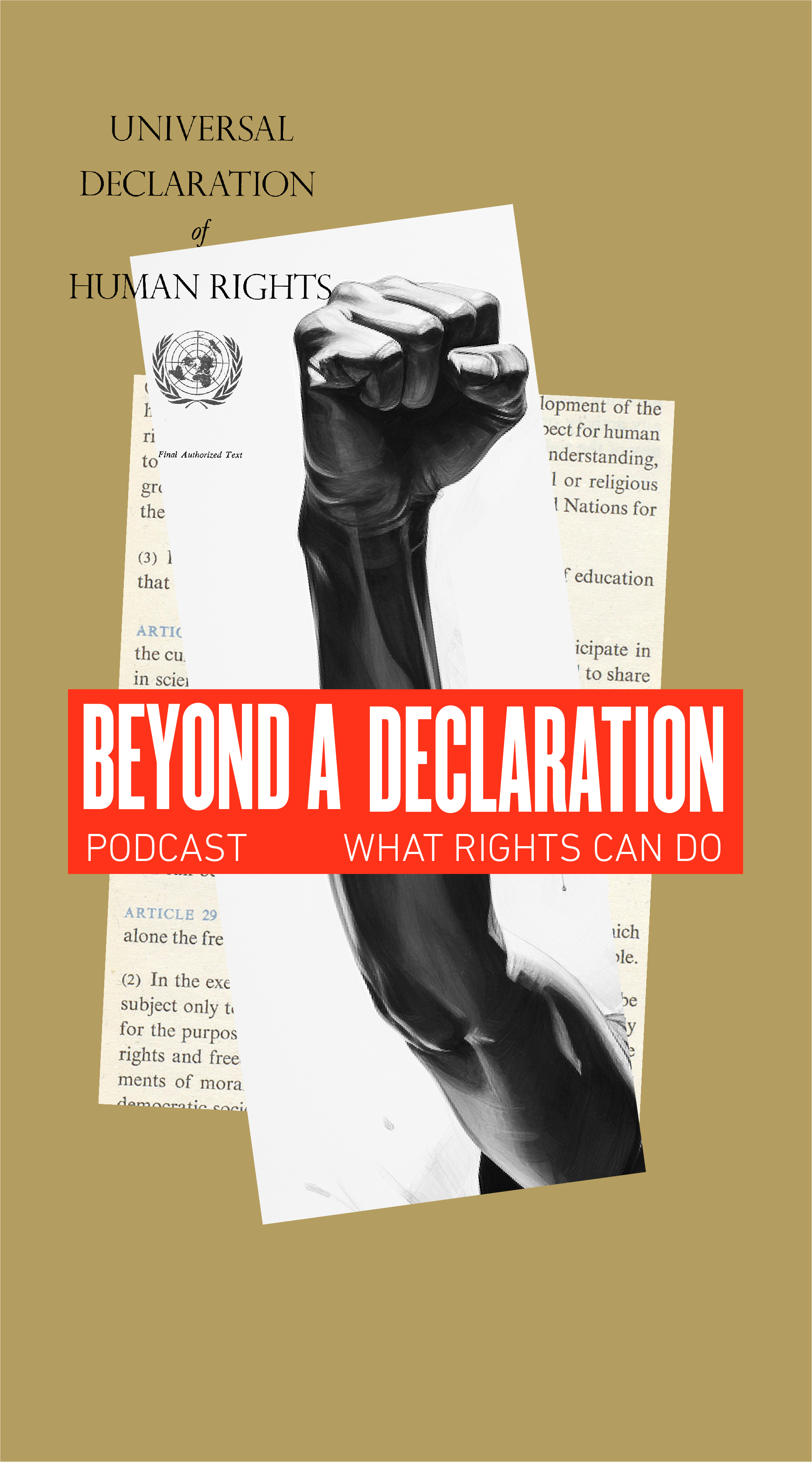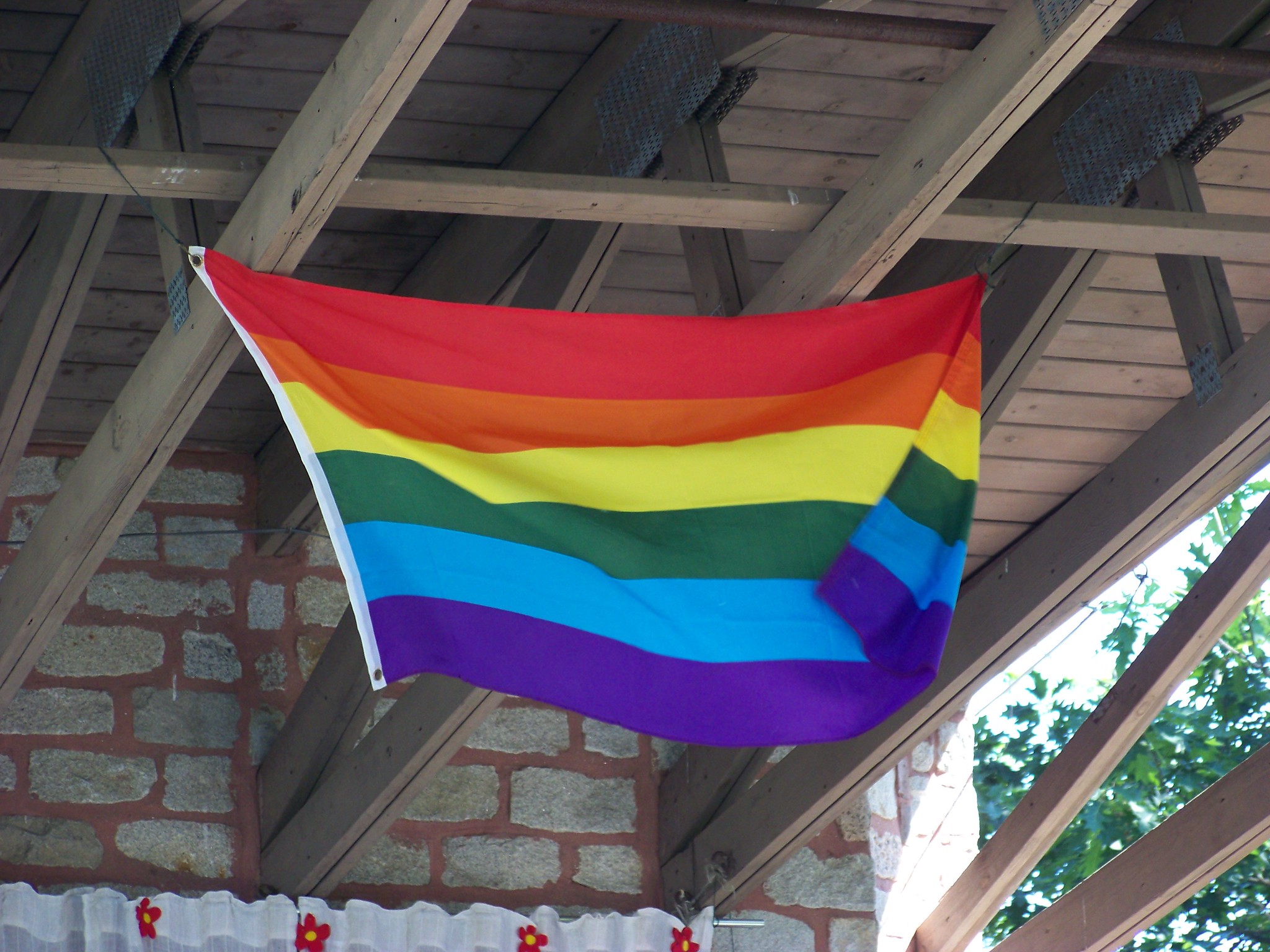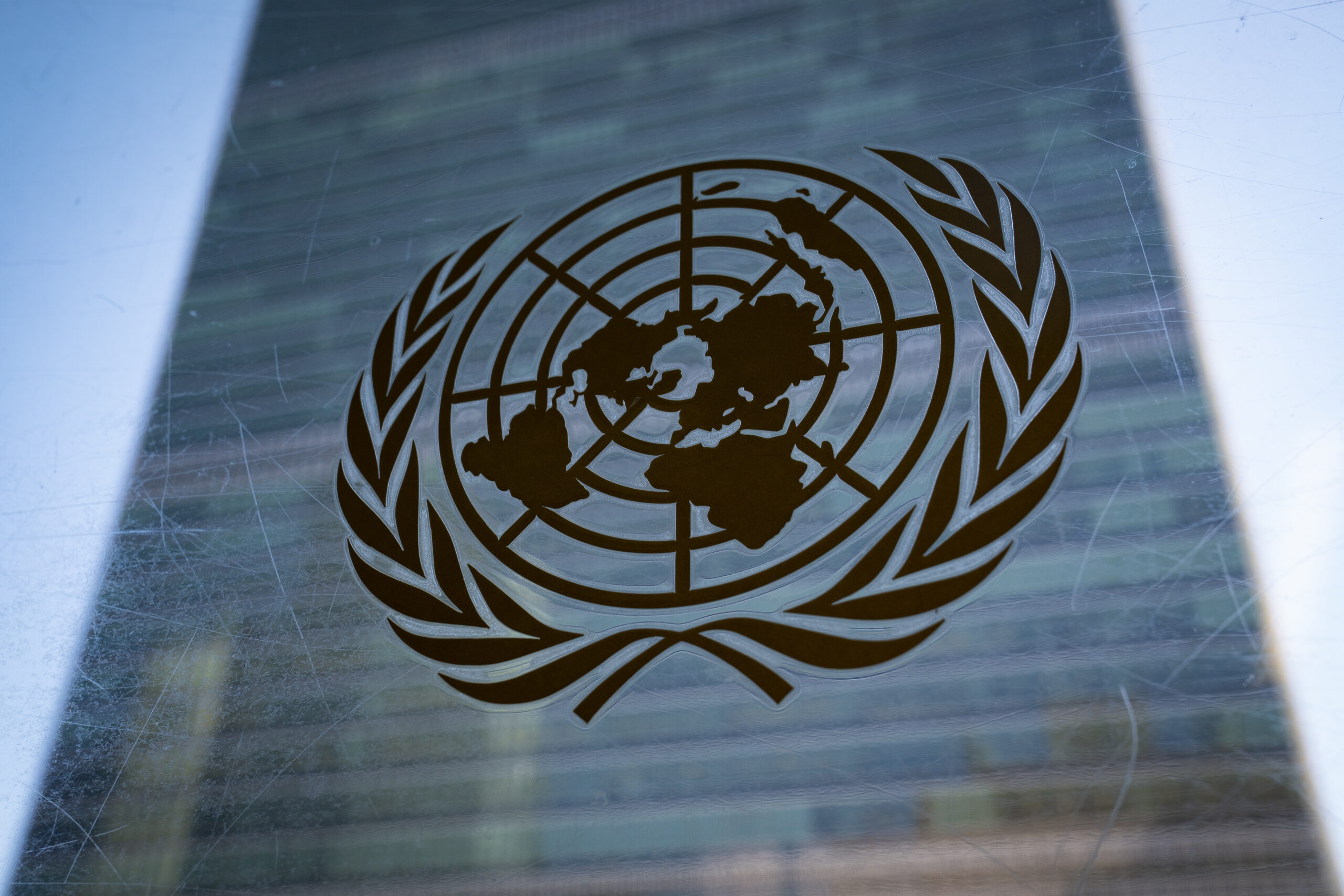This article is part of our series “On the Precipice: A Progressive Agenda in the Biden Era.” Download a PDF of the full series here.
A jokester once characterized Yale University as a hedge fund with a campus attached to it. One might say something similar of the country in which Yale is based.
The United States is abandoning what recently deceased political scientist Leo Panitch described as its responsibilities in managing global capitalism for the bourgeoisie worldwide. With public health and other earmarks of the modern state abandoned within even its own borders, the U.S. seems now more a stock market with a country attached.
It’s true, on the other hand, that the magical thinking of never-ending economic growth has long-anchored the American political ethos in settler expansionism. Nothing is more important than perpetual growth. Everything else—even our shared humanity and life on Earth itself—is to be subsumed under that prime directive.
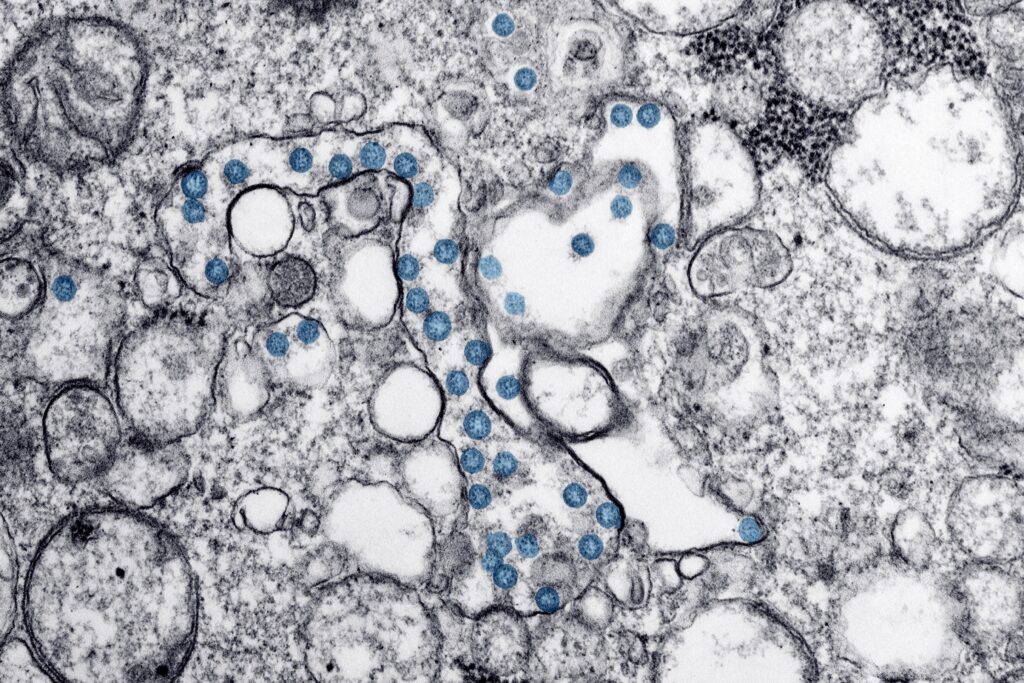
But this year’s COVID-19 outbreak alerted the world of a nation’s identity turned inside-out like a smelly sock. Rome wasn’t built in a day, but the U.S.’s nearly as fast a fall, however part of a longue durée decline from the its peak as a center of capital, should flabbergast even the sharpest of radical observers. For even a Biden administration may prove no prophylaxis for the COVID-19 outbreak and American decline overall.
Graphic content
The potion of economic growth did not save the day during the pandemic. Those countries that kept their economies opened at the expense of its population’s morbidity and mortality—the U.S., Mexico, Chile, Belgium, among others—suffered worse COVID-19 outbreaks and greater economic losses.
Wealth, on the other hand, remained protected, growing in record draughts and in ever greater concentration. Over the pandemic, March to December, the collective wealth of America’s 651 billionaires grew by more than one trillion U.S. dollars. That’s nearly four times the $267 billion in one-shot stimulus checks sent to 159 million Americans earlier in the year.
One can’t help but be outraged. Toward the end of the year, a graph circulated on the online left showing a direct relationship between daily S&P Index closings for the top 500 companies’ stock prices listed on the exchange and accumulative COVID-19 deaths in the U.S.
On its face, such a vulgarity of “dying for the market” seems a spurious correlation. Accumulative cases are always going to rise. So we might better plot the S&P and COVID-19 hospitalizations for days the market was open, in this case, in the nearby plot, for March 17-Dec 18. Hospitalizations ping up and down upon each COVID wave, marking the immediate state of the outbreak better than cumulative caseload.
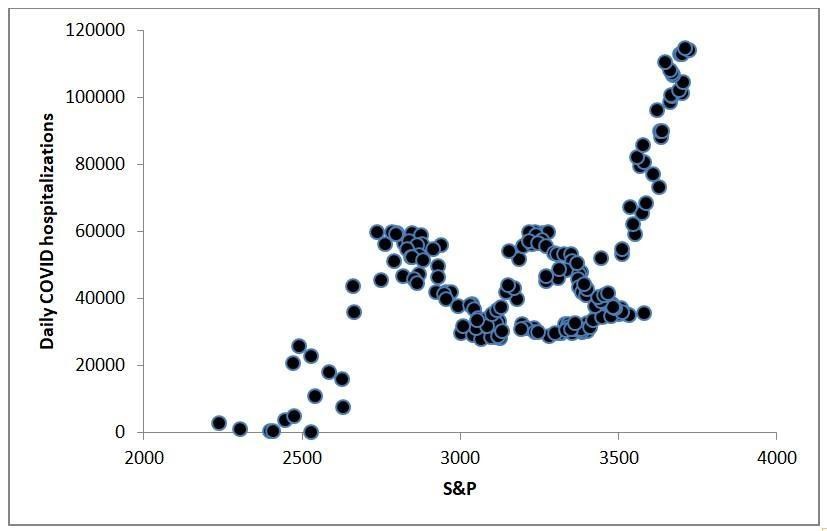
We can see here stock prices split through the first two U.S. COVID-19 waves, with different closings in the index—high and low—at the same level of hospitalizations. It appears upon the start of each COVID-19 wave stock prices shorted, bouncing back only on the wave’s decline. Research earlier in the outbreak showed just such a negative bias in stock closings, depressing the index more upon bad COVID-19 news than the amount it bounced back upon good.
So the market does react to news in the real world, even as financialization—investing in debt and currency—is increasingly divorced from the real economy (and the vast majority of people’s everyday lives). Or, in the more updated interpretation, as financialization increasingly drives the real economy regardless of the various perverse outcomes.
Geographer Albina Gibadullina recently plotted financialization by industrial sector across countries. The state of alienation in the U.S. across sectors is such that betting on the debt backing the economy increasingly supersedes outright investment in real commodities. Sudden disasters don’t roll our high-end gamblers back to reality, however. Not even back to the capitalist reality of the kinds of use value that might seem necessary to protect a system in crisis.
Sociologist John Bellamy Foster and colleagues describe financialization picking up in pace during the worst of damage brought about by the present pandemic. The resulting impacts aren’t felt just in stock portfolios or bond derivatives. With less revenue from elective surgery and other blows to projected profits, U.S. hospitals, for instance, are firing nurses during the worst outbreak in a hundred years.
Our S&P graph suggests that at the other end of the outbreak, even as hospitalizations are exploding in record number, with the vaccines rolling out and a Biden administration rolling in, things, from the vantage of capital, may be looking up. Capital will survive—even prosper—through half-a-million U.S. deaths its professional-managerial class largely dodged by staying at home.
So we may have here a positive bias later in the outbreak. Terrible news on the daily doesn’t depress stocks now that the bourgeoisie appears in the clear.
Here, then, we find ourselves back at the vulgar interpretation we thought we’d circumvent in favor of nuance. Because the rest of the U.S. is in terrible shape. Three-to-four times more of the population is hungry than an already unconscionable baseline. Millions have filed for inadequate unemployment insurance. Shoplifting of staples like food and diapers is at record levels. Tens of thousands of COVID deaths, more than that of many countries combined, have been attributed to housing evictions alone.
The overall trend apparent even in our rough graph from March to December—up, up, up—supersedes the dynamics of the stock market’s blips here and there. The resulting massacre—COVID and otherwise—is teaching Americans an abject lesson, at least for those in a position to assimilate it.
The extreme center’s gambit
The lesson can be so easily lost. The tumult of a political class at odds with itself forces the country to choose sides that are not of its own making.
The hard part is not letting January’s Trumpist putsch and the second impeachment that followed confuse matters. Certainly these histories count and defeating the fascist creep is always a front-and-center task. The roiling itself speaks to the bourgeoisie’s struggles with administering an empire in decline home and abroad.
But we need to keep in mind that politicians of both major parties—Democratic and Republican—spent this past year organizing themselves around simultaneously bailing out billionaires, now far richer than ever in only a few short months, and minimizing paying the poorest of Americans trying to survive a deadly pandemic.
Congress passed a lousy $1,200 of assistance per American earlier in 2020. It then dragged its ass for months at the end of the year before finally agreeing on another $600. A push to up the second payout to $,2000 was turned aside in the name of fiscal responsibility. The debate was cut off with a vote in favor of a military budget greater than the world’s next ten largest military budgets combined. Biden’s latest offer to fold in another $1,400 nowhere near approaches what smaller countries have been offering their citizens monthly from the pandemic’s start.
The lesson couldn’t be clearer. Under this system, Americans are to be given money to reproduce themselves only in the course of helping capital accumulate. Not even a pandemic is enough to interrupt imposing social identities tied largely to company productivity. People will just have to die if their living disrupts the very expropriation that brought about the pandemic.
In short, the present U.S. system is a death cult. And it isn’t administered just by Trump administrators propounding herd immunity into late summer, but by an incoming administration ready to get people back to work with vaccines that appear unlikely to stop transmission.
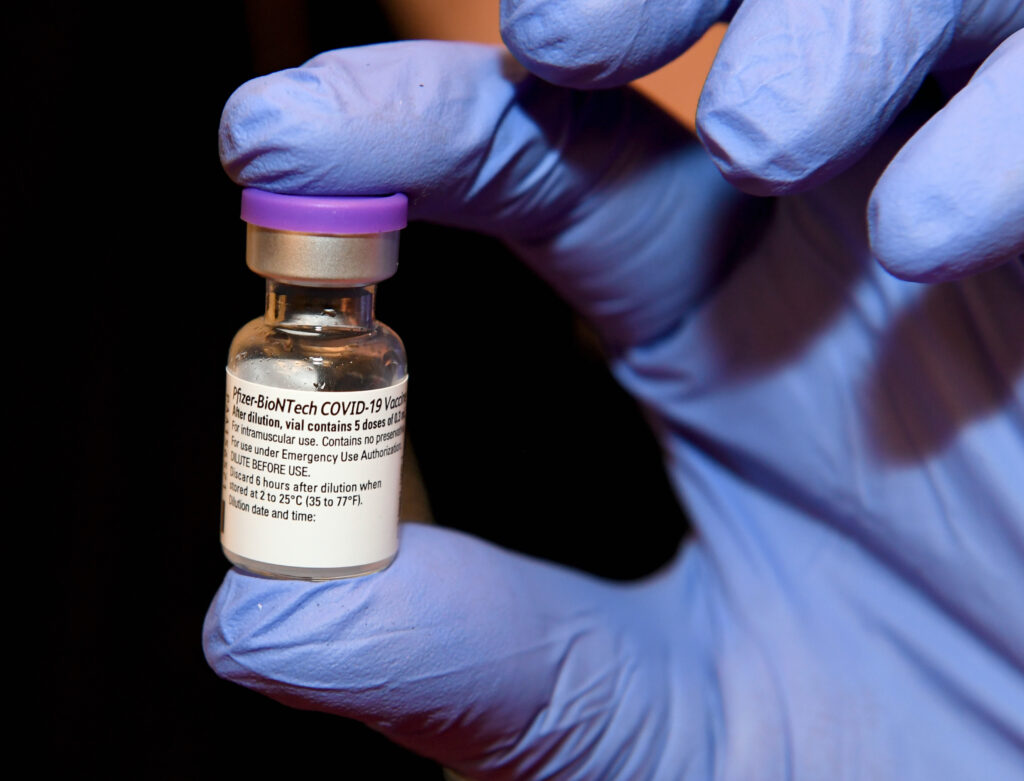
The irony is that a system that for decades neglected public health as a commons, and so upon COVID-19 was unable to administer nonpharmaceutical interventions, may now display a remarkable incapacity to distribute a pharmaceutical one it took such pride in producing.
In refusing to pay and protect the populace in its time of sacrifice, the political class may have lost the public’s trust. And the contacts and networks needed to connect people mind and body to public health as a shared fate were long destroyed for an S&P that the Biden administration aims to protect.
Even months before inauguration, Biden and his COVID-19 response embodied as much of the epoch’s exhausted spirit as Trump. While Trump represents the system’s id, Biden campaigned as its science-touting superego, only now, once elected, he’s back to acting its trap of a structurally imposed ego.
Capitalist realism, as far down as its alienated bedrock of climate collapse and dehumanizing labor markets, is at this point as delusional as the flat-Earthism it looks down upon and the ecomodernism—thinking technology enough to reverse climate change—to which it gravitates.
If the extreme center cannot hold, it is because in its ideological policing, blocking any alternative to the present shitshow, it appears, on the one hand, on track to accelerating civilization’s environmental crash. On the other hand, its celebrated failures of imagination open the way to the rise of more competent fascists.
Every step along the way the center champions “building back better” for the settler billionaires first and foremost. Even during COVID-19, the wealthy’s successes continue to destitute much of the world, global North and South. And yet former president Barack Obama spent 2020 campaigning against even a whiff of socialist or liberationist amelioration—intervening against the Bernie Sanders campaign, Black Lives Matter, the NBA wildcat strike, and the Squad of democratic socialist representatives in Congress.
Obama’s purring negation emerged out of the same insipid source as Biden’s decision to rehire agribusiness lobbyist Tom Vilsack for Secretary of Agriculture. With whole swaths of rural countryside enraged enough by the damage of neoliberal agriculture to flirt with fascism. Now that is some inspired thinking there! Let’s return the U.S. back to the conditions that brought about Trump in the first place.
Bidenfreude—relief in Trump’s defeat but little joy—offers no exit out of the existential trap the men from Hope (here and here) spring upon the American electorate every four years.
The only egress is disconnecting out of the neoliberal imaginarium. There are thousands of years of alternate paradigms—Indigenous, smallholder, working class—at fundamental odds with the present political class’s tottering brinkmanship. It’s time to start parsing through these alternatives, experimenting with them anew, whatever the lengths to which the Yale-educated and other “best and brightest” scold us.
Pragmatic Interventions Require Radical Utopianism
Escaping the head space (and programmatic options) neoliberalism imposes for far better socioecological pastures, where people and place are treated as more than their productivities—that’s the pandemic path forward.
As I’ve described in greater detail elsewhere, once there, pragmatic interventions, in this case for COVID-19, flow as a matter of course:
- Go for the knockout. Aim for the kind of total COVID-19 suppression other countries far less wealthy were able to complete in a matter of months without a vaccine.
- Scale up community health for the pandemic we have (not the one we wish we had). Scale up hospital capacity, testing, contract tracing, and vaccine and PPE distribution—all made free to the public—to match the numbers SARS-CoV-2 is operating with, not what the capitalist state cares to pay for. That is, unlike Trump and now Biden, follow what science models is a proper intervention.
- Suspend capitalism. Quarantines don’t work if only the rich can stay home. Pay people who are working non-essential jobs to stay home. Pause their rent, mortgages, and debts. Feed them from municipalized restaurants and food trucks. Check in on them with millions of newly hired community health workers. Pay essential workers hazard pay and supply enough PPE and vaccine so that, as was reported here and here, they don’t have to fistfight over what’s available.
- Celebrate the pandemic’s end. Continue to pay people to take a couple weeks off to celebrate society’s victory over an existential threat. We should consecrate the end of the scourge as a repudiation of capitalism’s death march through our lives and its role in driving the emergence of pandemic strains to begin with. Looking around the wreckage, we might discover we prefer this new option.
- Reintroduce agriculture and nature. To keep COVID-21, -22, and -23 from emerging next, whether as another SARS or as an avian influenza, Ebola, African swine fever, or any of the hundreds of potential protopandemics, we must end global agribusiness, logging, and mining as we know them. We need to reintroduce the mosaic food landscapes of complex ecologies and agrobiodiversities that disrupt the evolution of the deadliest of pathogens.
- Return rural sovereignty. Such interventions require returning rural communities their locus of control. We must turn to the kind of state planning that centers farmer autonomy, community socioeconomic resilience, circular economies, integrated cooperative supply networks, food justice, land trusts, and reparations. We must undo deeply historical race, class, and gender trauma at the center of land grabbing and environmental alienation.
- Imagine humanity beyond the market. Such a political reordering requires that we end the unequal ecological exchange between the Global North and South. It requires that we plant a different political philosophy in the landscape, making a better balance of humanity’s appropriation of Earth’s resources and healing the metabolic rift between ecology and economy.
So seven points to start. With much more to do. But look what we can begin to think through when the Obamas, Trumps and Bidens of the world, whether in the flesh or in our own heads, are unable to interrupt us.
Rob Wallace is an evolutionary epidemiologist with the Agroecology and Rural Economics Research Corps. He is author of Big Farms Make Big Flu and the recently published Dead Epidemiologists: On the Origins of COVID-19. He has consulted with the Food and Agriculture Organization and the Centers for Disease Control and Prevention.
